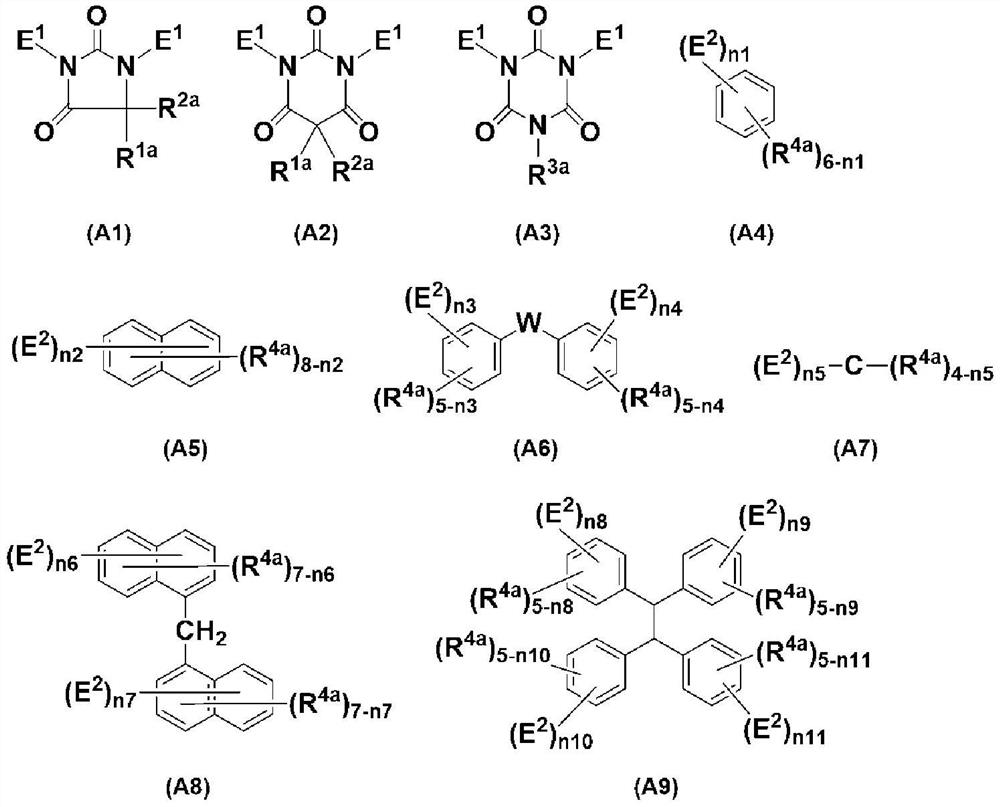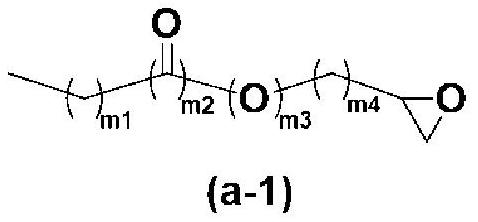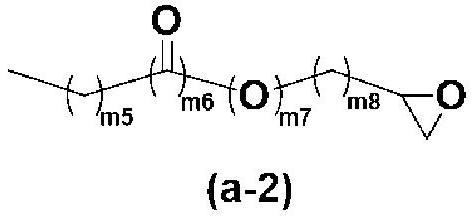Method for producing polymer
A manufacturing method and polymer technology, applied in the field of polymer manufacturing, can solve the problems of increase, damage of stirring paddle, high viscosity, etc.
- Summary
- Abstract
- Description
- Claims
- Application Information
AI Technical Summary
Problems solved by technology
Method used
Image
Examples
Embodiment 1
[0194] A 200 mL reaction flask was charged with (A) 12.6 g of monoallyl diglycidyl isocyanuric acid, (B) 6.6 g of adipic acid, and (C) ethyltriphenylphosphonium bromide as a polymerization catalyst 0.84 g, (D) 0.18 g of pyridine as a co-catalyst, and 60 g of propylene glycol monomethyl ether were used to prepare a raw material solution. The molar ratio of (C)component and (D)component is 1:1, and the equivalent ratio of (A)component and (B)component is 1:1.01.
[0195] Next, this solution was heated and refluxed at 121° C., and reacted for 1 to 6 hours to synthesize a polymer. GPC analysis of the produced polymer showed that Mw=6400 at 1 hour after reaching reflux temperature, Mw=10100 at 2 hours, Mw=10500 at 4 hours, Mw=10400 at 5 hours, and at 6 hours Mw=10400, after 4 hours after reaching the reflux temperature, the weight average molecular weight Mw stabilized.
Embodiment 2
[0197] A 200 mL reaction flask was charged with (A) 12.6 g of monoallyl diglycidyl isocyanuric acid, (B) 6.6 g of adipic acid, and (C) ethyltriphenylphosphonium bromide as a polymerization catalyst 0.84 g, (D) 0.26 g of pyridine as a co-catalyst, and 60 g of propylene glycol monomethyl ether were used to prepare a raw material solution. The molar ratio of (C)component and (D)component is 1:1.5, and the equivalent ratio of (A)component and (B)component is 1:1.01.
[0198] Next, this solution was heated and refluxed at 121° C., and reacted for 1 to 7 hours to synthesize a polymer. GPC analysis of the produced polymer showed that Mw=6500 in the first hour after reaching the reflux temperature, Mw=8100 in the second hour, Mw=8100 in the fourth hour, Mw=8000 in the fifth hour, and Mw in the sixth hour Mw = 7900, Mw = 7800 at the 7th hour, and the weight average molecular weight Mw was stabilized after 2 hours after reaching the reflux temperature.
Embodiment 3
[0200] A 200 mL reaction flask was charged with (A) 12.6 g of monoallyl diglycidyl isocyanuric acid, (B) 6.6 g of adipic acid, and (C) ethyltriphenylphosphonium bromide as a polymerization catalyst 0.84 g, (D) 0.09 g of pyridine as a co-catalyst, and 60 g of propylene glycol monomethyl ether were used to prepare a raw material solution. The molar ratio of (C)component and (D)component is 1:0.5, and the equivalent ratio of (A)component and (B)component is 1:1.01.
[0201]Next, this solution was heated and refluxed at 121° C., and reacted for 1 to 7 hours to synthesize a polymer. GPC analysis of the produced polymer showed that Mw=8500 in the first hour after reaching the reflux temperature, Mw=13200 in the second hour, Mw=15000 in the fourth hour, Mw=14900 in the fifth hour, and Mw in the sixth hour Mw=14800 at 7 hours, Mw=14600 at 7 hours, after 4 hours after reaching the reflux temperature, the weight average molecular weight Mw stabilized.
PUM
 Login to View More
Login to View More Abstract
Description
Claims
Application Information
 Login to View More
Login to View More - Generate Ideas
- Intellectual Property
- Life Sciences
- Materials
- Tech Scout
- Unparalleled Data Quality
- Higher Quality Content
- 60% Fewer Hallucinations
Browse by: Latest US Patents, China's latest patents, Technical Efficacy Thesaurus, Application Domain, Technology Topic, Popular Technical Reports.
© 2025 PatSnap. All rights reserved.Legal|Privacy policy|Modern Slavery Act Transparency Statement|Sitemap|About US| Contact US: help@patsnap.com



